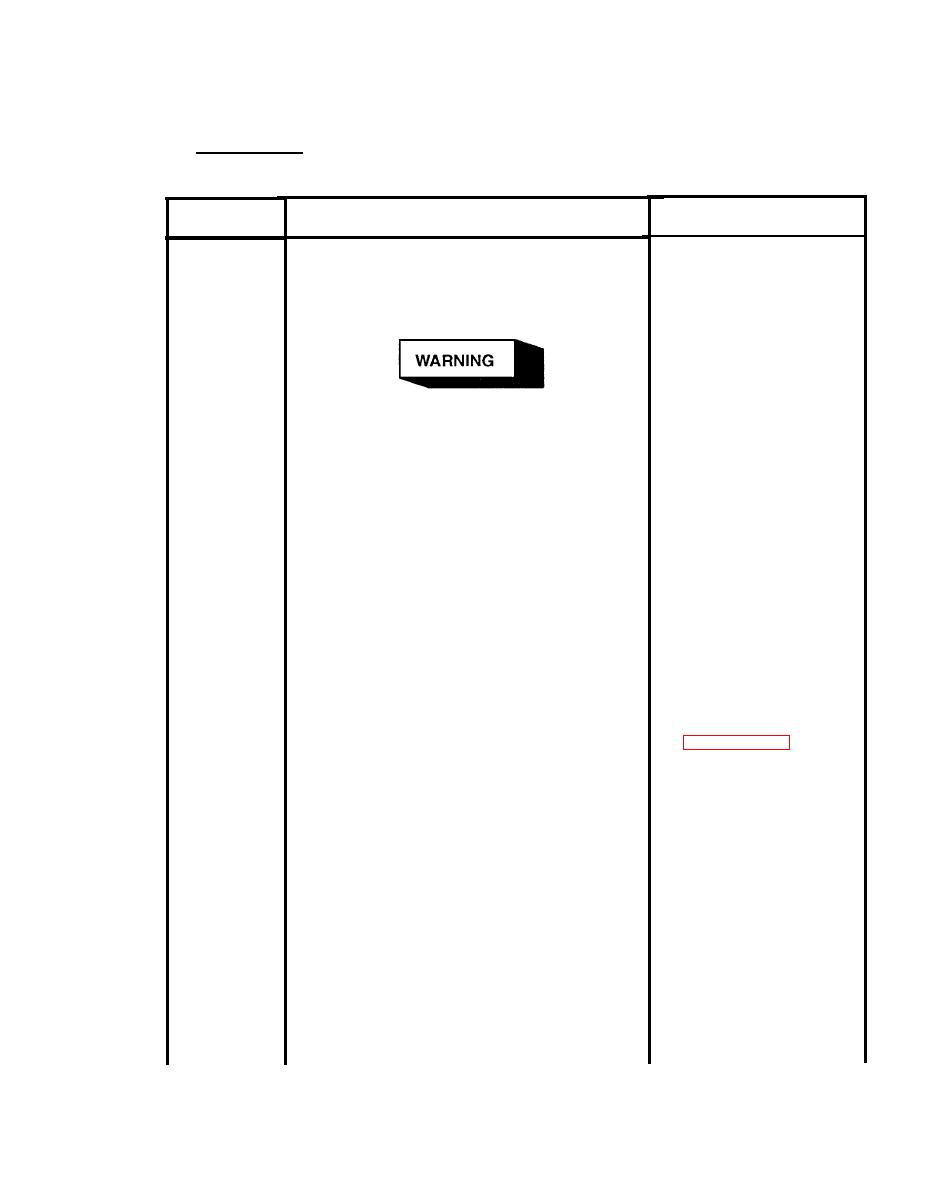
TM 9-4120-378-14
5.27 COMPRESSOR. - continued
Remarks
Action
Location/Item
a.
After removal of a bad compressor from the refrig-
Decontamina-
eration system, tip the compressor toward the dis-
tion
charge port to drain sample of oil into a clear glass
container.
Avoid inhaling fumes and burns from
any acid formed by burn out of oil and
refrigerant.
b.
If the oil is clean and clear, and does not have a
burnt acid smell, the compressor did not fail be-
cause of motor burn out. If a burn out is not indi-
cated, proceed to installing a replacement com-
pressor.
c.
If the oil is black, contains sludge, and has a burnt
acid odor, the compressor failed because of motor
burn out.
d.
You must clean the entire refrigeration system after
a burn out has occurred, since contaminants will
have been carried to many corners and restrictions
in the piping and fittings. These contaminants will
soon mix with new refrigerant gas and compressor
oil to cause repeated burn outs.
See paragraph 5.25.
Remove the dehydrator (filter-drier) and blow down
e.
each leg of the refrigeration system. To do this,
connect a cylinder of dry nitrogen to each dehydra-
tor connection, in turn, and open the cylinder shut-
off valve for at least 30 seconds at 50 psig (3.5 kg/
cm2) pressure.
f.
Connect the two dehydrator fittings with a jumper
locally manufactured from refrigerant tubing and fit-
tings.
Clean system by back-flushing with liquid R-11
g.
from pressurized cylinder or circulating pump and
reservoir with pressure of at least 100 psig.
h.
If pump is used, connect the discharge line of the
refrigerant system to the discharge side of pump.
i.
Connect a line containing a filter to the suction line
in the unit.
5-81

